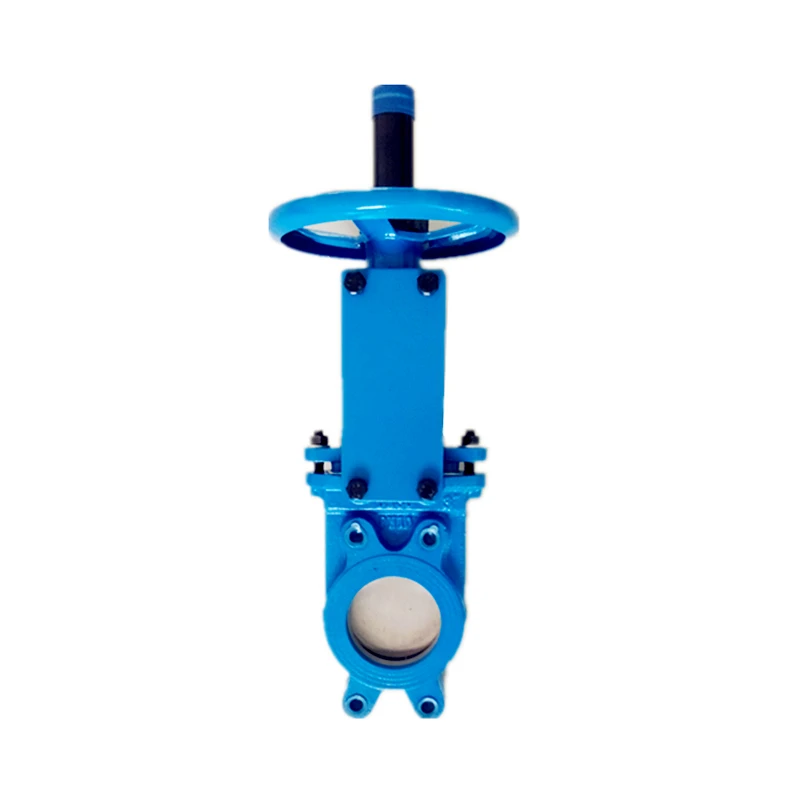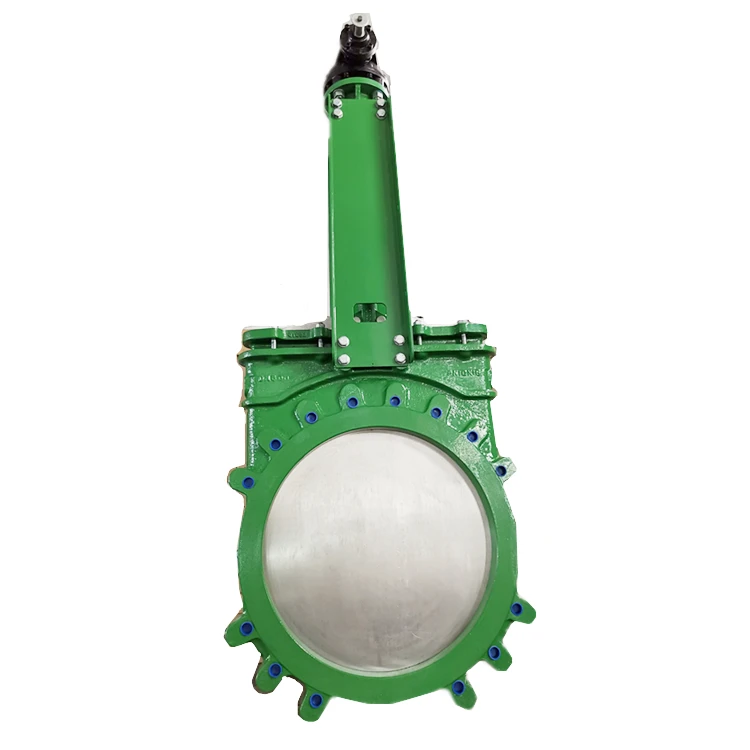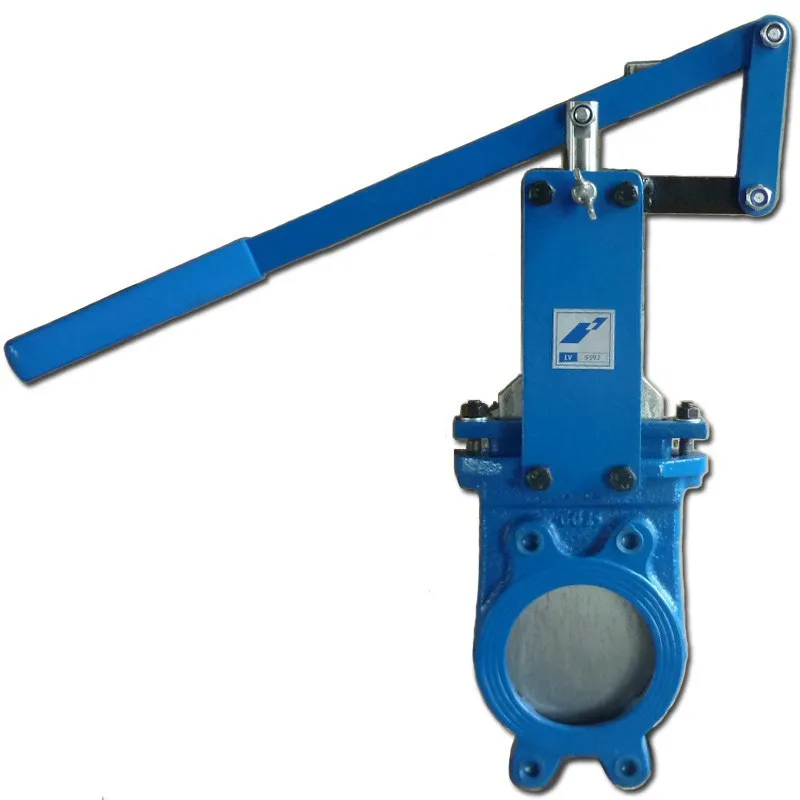Innovative Pneumatic Knife Gate Valves for Diverse Applications
Key Takeaways
Pneumatic-operated knife gate valves serve as efficient control solutions in various demanding environments. Their design allows for robust handling of fluids, presenting advantages on many fronts, including durability and ease of operation. The pneumatic-actuated functionality enhances operational efficiency by utilizing compressed air to smoothly open or close the valve, significantly reducing manual intervention. In sectors requiring high precision and reliability, products such as the polyurethane knife gate valve and PTFE-lined knife gate valve prove essential. These materials offer superior chemical resistance and extended service life, making them invaluable for applications involving aggressive media. The versatility of Praher knife gate valves makes them prominent in industries ranging from wastewater treatment to food processing, underlining their adaptability to specific operational demands. Emphasis on innovation ensures that users benefit not only from performance enhancements but also from safety improvements, reducing leak potential in critical systems. Each feature highlights the significant contributions these valves make to optimizing performance across a variety of applications and industries.
Innovative Features of Pneumatic-Operated Knife Gate Valves
Pneumatic-operated knife gate valves represent a significant advancement in the field of fluid control technology. The design of these valves allows for efficient operation in various conditions and applications. One key feature is the use of pneumatic actuation, which ensures rapid and precise closure and opening, making them ideal for handling materials that require quick responsiveness. The structure of these valves often includes a robust blade that slices through the material flow, reducing wear and tear compared to conventional valves.
In addition, the integration of materials such as polyurethane and PTFE enhances their performance. Polyurethane offers excellent elasticity and durability, providing a reliable seal even under challenging conditions. PTFE-lined knife gate valves promote resistance to chemicals, making them suitable for industries dealing with corrosive substances. These material advantages contribute to longevity and reduced maintenance costs.
Consider the innovative approach seen in Praher knife gate valves, which feature a unique design tailored for demanding environments. Their construction not only allows for easy installation but also facilitates straightforward servicing. This reduces downtime, thereby enhancing operational efficiency across various sectors.
"Choosing the right valve can significantly impact system performance; invest in proven technologies for longevity."
The advancement in pneumatic actuation further emphasizes ease of use, enabling operators to control processes with minimal effort while ensuring maximum safety. This combination of innovative features underscores the versatility and reliability of pneumatic-operated knife gate valves across diverse applications.

Benefits of Polyurethane and PTFE-Lined Knife Gate Valves
Polyurethane and PTFE-lined knife gate valves offer numerous advantages that enhance their functionality across various industrial applications. The durable nature of polyurethane provides excellent resistance to abrasion, making these valves suitable for handling slurries and viscous fluids. This material's flexibility contributes to a tighter seal, minimizing the risk of leakage during operation. In contrast, PTFE (polytetrafluoroethylene) is renowned for its exceptional chemical resistance. PTFE-lined knife gate valves can handle highly corrosive substances, extending the lifespan of the valve while ensuring safe operations. Both materials maintain performance under extreme temperatures, allowing for versatile use in diverse environments. The design of these valves simplifies maintenance procedures, reducing downtime and operational costs. Enhanced flow characteristics result from their streamlined design, promoting efficiency in fluid transfer. These benefits position polyurethane and PTFE-lined knife gate valves as indispensable components in various sectors, including wastewater treatment, chemical processing, and mining operations. Industries can maximize productivity while ensuring safety standards are met through the strategic use of these advanced valve solutions.

Applications of Praher Knife Gate Valves in Various Industries
Praher knife gate valves are integral in a multitude of industries, serving specific needs that enhance operational efficiency. In the water treatment sector, these valves are vital for controlling flow and managing sludge. Robust sealing capabilities allow them to operate under varying pressure conditions, crucial for maintaining system integrity. In the mining industry, pneumatic-operated knife gate valves are utilized to handle abrasive materials. Their durability is essential for withstanding harsh environmental factors while ensuring precise flow regulation. Chemical processing environments leverage PTFE-lined knife gate valves for their resistance to aggressive fluids, preventing contamination and ensuring safety. Polyurethane knife gate valves also find applications in industries dealing with solid-liquid mixtures due to their ability to handle high solids loads without sustaining damage. The versatility of pneumatic-actuated functionality allows these valves to automate flow control processes, reducing manual labor and increasing responsiveness in critical operations. Overall, the adaptability of Praher knife gate valves across different settings underscores their significance in enhancing productivity and ensuring safety in diverse industrial applications.
Understanding Pneumatic-Actuated Functionality in Knife Gate Valves
Pneumatic-actuated knife gate valves utilize compressed air to drive the valve’s opening and closing mechanism, enabling precise control over fluid flow. This functionality is particularly advantageous in applications that require quick and reliable operation. The pneumatic system consists of several key components: an actuator, a valve body, and the necessary piping for air supply. When air pressure is applied to the actuator, it generates linear motion that operates the valve gate. This linear motion facilitates a rapid response time, essential in environments where flow control is critical.
The actuator design contributes significantly to the reliability and efficiency of these valves. Pneumatic systems are often favored for their ability to function in harsh conditions without sacrificing performance. Furthermore, pneumatic-actuated knife gate valves offer users flexibility, as they can be engineered to deliver a variety of torque levels tailored to specific user requirements. These advantages make them suitable for challenging applications across diverse industries such as wastewater management, pulp and paper, and food processing.
Component | Functionality |
|---|---|
Actuator | Converts air pressure to mechanical motion in the valve |
Valve Body | Houses the valve mechanism and controls fluid flow |
Air Supply Piping | Delivers compressed air to the actuator |
The integration of innovative materials like polyurethane or PTFE linings in these valves enhances their longevity and resilience against corrosive substances. By understanding how pneumatic-actuated systems operate within knife gate valves, end-users can maximize their benefits across various applications while ensuring optimal performance under varying operational demands.

Conclusion
The need for pneumatic-operated knife gate valves in various industrial settings continues to grow, attributed to their reliable and efficient operation. Such valves, particularly the polyurethane knife gate valve and PTFE-lined options, provide enhanced resistance to corrosive materials, making them ideal for demanding environments. Companies seeking durability and performance in fluid control find that praher knife gate valves exhibit exceptional functionality and versatility. Their design facilitates effective handling of dry bulk solids and slurries, bridging the gap between traditional valves and modern operational requirements. The pneumatic-actuated functionality incorporated within these valve systems offers precision control that enhances operational efficiency while minimizing wear over time. As industries evolve, the adoption of these advanced valve technologies becomes increasingly essential for optimizing processes across various applications.
FAQs
What are pneumatic operated knife gate valves?
Pneumatic operated knife gate valves are specialized valves that utilize pneumatic pressure to control the opening and closing mechanism. This design enhances the precision and responsiveness of valve operation, making it suitable for various industrial applications.
What advantages do polyurethane knife gate valves offer?
Polyurethane knife gate valves provide excellent abrasion resistance and durability, making them ideal for handling slurries, pulp, and other abrasive media. Their flexible nature allows for a reliable seal, minimizing leakage and improving overall efficiency.
How does a PTFE lined knife gate valve function?
A PTFE lined knife gate valve features a coating of PTFE, or polytetrafluoroethylene, which offers enhanced chemical resistance and reduces friction. This makes these valves suitable for applications involving corrosive substances while providing a smooth flow and ease of operation.
What are praher knife gate valves used for?
Praher knife gate valves are specifically designed for handling bulk materials, abrasive liquids, and heavy slurries across various industries. Their robust design ensures reliability in demanding conditions while facilitating quick maintenance.
Why choose pneumatic-actuated functionality in knife gate valves?
Pneumatic-actuated functionality allows for rapid operation of the valve with minimal manual intervention. This automation improves operational efficiency and enables precise control over flow rates in processes requiring fast adjustments.




